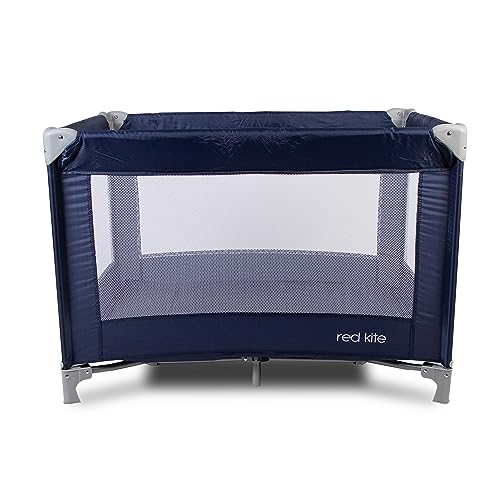Can a Newborn Sleep in a Travel Cot?
For new moms and dads, among the most crucial factors to consider when bringing a baby into the world is producing a safe and comfortable sleeping environment. Whether you're preparing a household trip or simply looking for a versatile and portable sleeping option for your little one, you might be wondering: Can a newborn sleep in a travel cot? The short answer is yes, however with correct safety measures to guarantee their safety and comfort. Here's what you need to know.
What Is a Travel Cot?
A travel cot (likewise called a travel crib or portable crib) is a lightweight, foldable bed developed for infants and young children. It's often utilized as a short-lived sleeping service for journeys, sees to grandparents' houses, or as a second bed in another space. A lot of travel cots include a collapsible frame and a thin mattress or base for convenience and mobility.
But is it appropriate for a newborn?
Can Newborns Sleep Safely in a Travel Cot?
Yes, a newborn can sleep in a travel cot, provided it meets particular security guidelines and is established appropriately. The crucial aspect is making sure that the travel cot supplies a safe and helpful sleeping environment for your little one. Here's how you can make it work:
Check for Safety Standards
When picking a travel cot, make certain it complies with security policies, such as those detailed by ASTM International, the European Safety Standards (EN 716), or comparable standards in your country. The cot should have durable building and construction, breathable mesh sides, and no gaps where your baby might get caught.
Utilize the Original Mattress
Travel cots frequently feature a thin, firm bed mattress specifically created for that design. This is intentional-- firm bed mattress minimize the threat of Sudden Infant Death Syndrome (SIDS). Avoid adding extra cushioning or soft bed linen, as these can posture suffocation threats.
Follow Safe Sleep Guidelines
The American Academy of Pediatrics (AAP) and other health companies suggest that infants sleep on a company, flat surface without pillows, bumpers, or blankets. Always put Find Out More on their back to sleep in the cot, simply as you would in a basic crib.
Display Temperature and Comfort
Travel cots are often made from breathable mesh, so your infant is less most likely to get too hot. Still, ensure your newborn is dressed properly for the space temperature level, as getting too hot is a threat element for SIDS.
Pros of Using a Travel Cot for Newborns
Portability
Travel cots are created with convenience in mind. They're lightweight, easy to put together, and compact, making them ideal for households who travel frequently or move in between rooms.
Flexibility
Many travel cots are appropriate for newborns but are also large enough for your baby to turn into. This means your financial investment can last for months and even years.
Hassle-free for Small Spaces
If you're tight on space or do not have space for a full-size crib, a travel cot can be a practical alternative.
Cons of Using a Travel Cot for Newborns
Thin Mattresses
The thin mattress in a travel cot, while safe and company, might not seem as comfortable as a routine crib bed mattress. However, keep in mind that young infants do not need extreme cushioning, and a company surface is in fact much safer for them.
Lower Height for Parents
The majority of travel cots are rather low to the ground, which can be challenging for moms and dads who need to lift their child frequently throughout the night, particularly in the newborn phase.
Setup and Storage
While most travel cots are easy to set up, the process can be cumbersome for some designs, particularly for sleep-deprived new parents.
Is a Travel Cot a Long-Term Solution?
Although a travel cot can be a safe and practical option for your newborn, it may not always change a full-sized crib for long-term use. Find Out More are designed for short-term sleeping arrangements and journeys. Nevertheless, some premium designs are developed with newborn inserts or bassinets, which allow the cot to grow with your child and be used for prolonged periods.
Tips for Using a Travel Cot with a Newborn
Select a Newborn-Friendly Model: Some travel cots come with a raised bassinet accessory. This feature provides a higher sleeping level that's easier for parents while keeping the infant safe.
Assemble it Correctly: Double-check that the travel cot is securely put together without any loose parts or gaps.

Introduce the Cot Early: If you're traveling, let your baby nap in the travel cot at home initially. This can assist them get used to the new sleeping environment.
Keep It Close: Place the travel cot in your space for the very first couple of months. Room-sharing (but not bed-sharing) is recommended to reduce the threat of SIDS.
Last Thoughts
A travel cot can definitely be a safe and useful sleep service for a newborn, supplied it meets safety requirements and is established properly. It provides flexibility for moms and dads on the go, while also working as a hassle-free option to standard cribs in smaller sized areas. By following safe sleep practices and ensuring the cot is suitable for your infant's requirements, you can rest ensured that your child is sleeping comfortably-- no matter where you are.
If you're considering a travel cot for your newborn, research study your alternatives thoroughly and, as constantly, consult your pediatrician for personalized advice. Safe sleep is the foundation of sweet dreams, for both your child and you!
